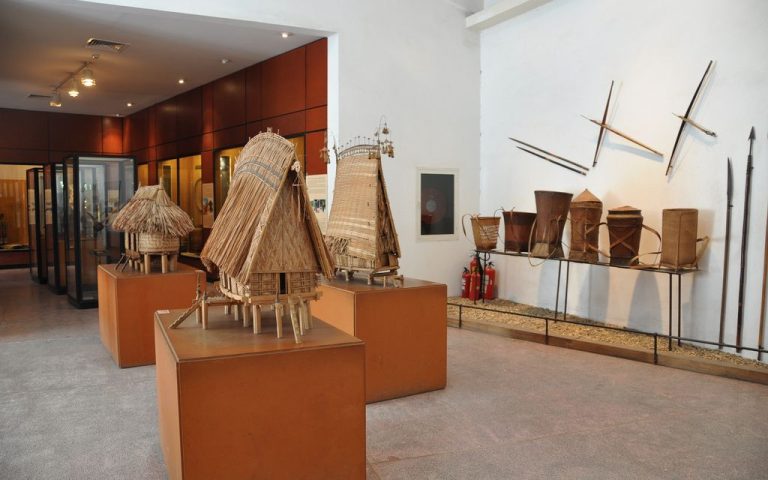
Experiencing Vietnam’s Rich Ethnic Diversity at the Vietnam Museum of Ethnology
Experiencing Vietnam’s Rich Ethnic Diversity at the Vietnam Museum of Ethnology Embarking on a journey through the Vietnam Museum of
Hue Capital, Vietnam's former imperial capital, boasts a long-lasting treasure trove of world-renowned ancient wonders, distinctive cultural traits, and delightful traditional cuisine, where visitors can immerse themselves in Vietnam's illustrious history as if they are traveling back in time. Exploring Hue Capital means not only delving into its past glories but also engaging with its vibrant present and promising future. From its historical monuments to its bustling streets, Hue Capital offers a captivating blend of tradition and modernity, making it a cultural gem worthy of exploration.
Location: Hue city, Thua Thien Hue (click here to open google map)
Hue Capital is situated in central Vietnam, along the banks of the Perfume River (Sông Hương) that flows through the city. Positioned approximately halfway between Hanoi, the capital of Vietnam in the north, and Ho Chi Minh City (formerly Saigon), the country's largest city in the south, Hue Capital holds a strategic geographic location. It is the capital of Thua Thien-Hue Province, nestled between the Annamite Mountain Range and the South China Sea, offering stunning landscapes and coastal vistas.
The city's central position facilitates easy accessibility through various transportation options. Hue Capital has its airport, Phu Bai International Airport, providing domestic flights to major Vietnamese cities. Furthermore, Hue Capital is well-connected by road and rail networks, making it a favored stop for travelers navigating Vietnam's north-south corridor.

Hue Capital, Vietnam, boasts a rich and storied history that spans over centuries. The area around modern-day Hue has been inhabited since ancient times, with evidence of settlements dating back thousands of years. However, it wasn't until the 17th century that Hue began to emerge as an important political and cultural center. In the early 17th century, the Nguyen lords, a powerful feudal family, established their rule over the southern part of Vietnam, with Hue Capital as their seat of power. The Nguyen lords played a crucial role in Vietnam's history, resisting foreign invasions and consolidating their control over the region.
The city truly flourished during the Nguyen Dynasty, which lasted from 1802 to 1945. Emperor Gia Long, the first ruler of the Nguyen Dynasty, moved the capital from Hanoi to Hue Capital in 1802, symbolizing the unification of Vietnam after centuries of division. Despite the devastation of war, much of Hue Capital's historical heritage has been preserved. In 1993, UNESCO designated the Complex of Hue Monuments, including the Imperial City, as a World Heritage Site, recognizing its cultural and historical significance.
Throughout five centuries, Hue Capital was the cradle of imperial power and patriotic revolutions, witnessing the splendor of Vietnam's feudal past and its struggles in fierce wars. In modern times, Hue Capital retains its significance as a center for tourism, education, and religion in central Vietnam.

Hue Capital's weather features a tropical monsoon climate with distinct seasons—spring, summer, autumn, and winter—each offering unique characteristics for travelers to consider when planning their trip.
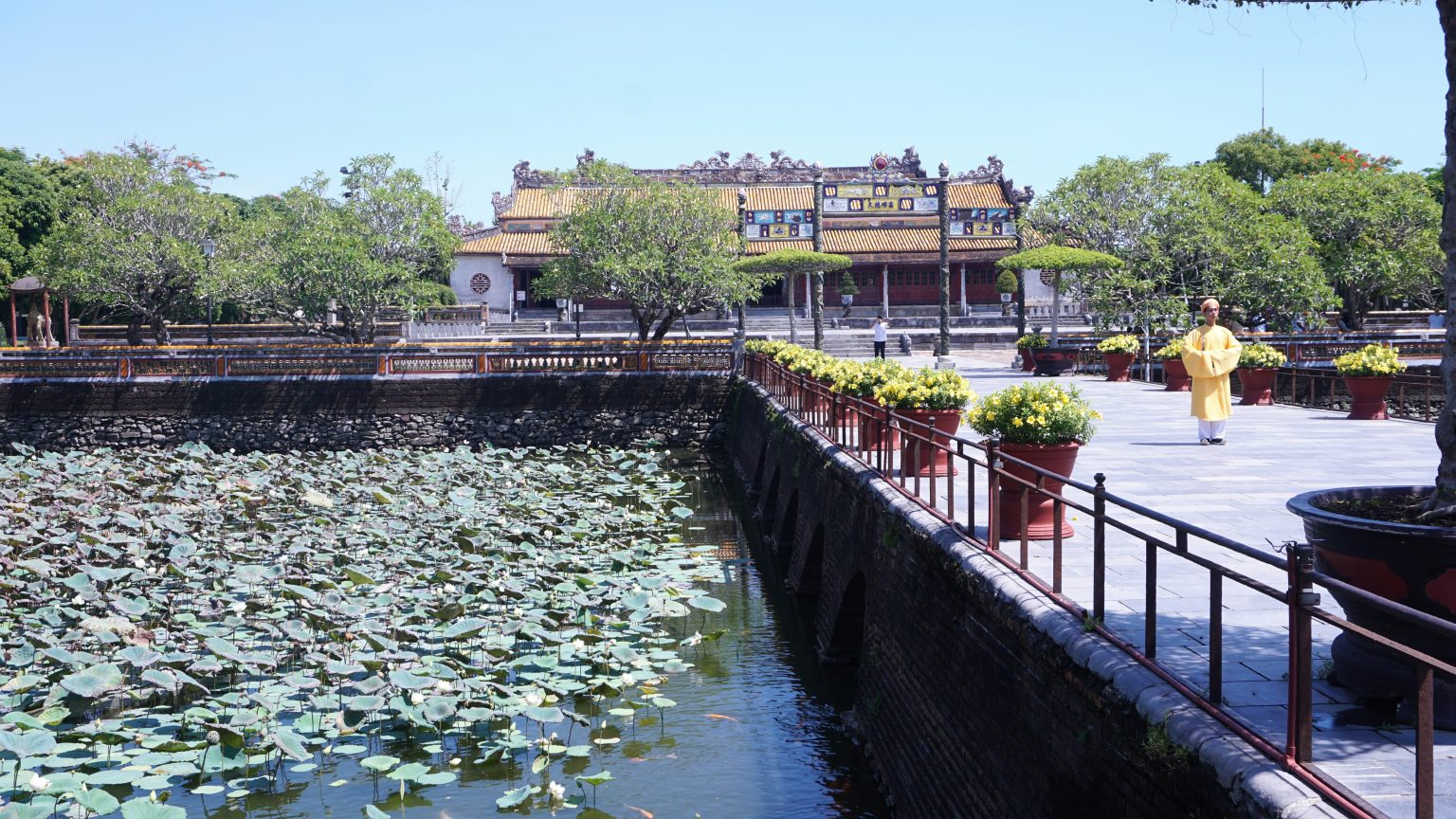
Considering these factors, the months of March and April are often considered the best time to visit Hue Capital due to the combination of favorable weather conditions, minimal rainfall, and vibrant cultural activities. However, if you prefer fewer crowds and don't mind the occasional rain shower, visiting during the shoulder months of February or August can also be a good option. It's essential to check weather forecasts closer to your travel dates and be prepared for sudden changes in weather patterns, especially during the transitional months.
Please note that due to the high reservation traffic of Hue Capital's hotels during the peak season of domestic travel, having accommodations booked in advance will be necessary for your relaxing vacation in Hue Capital, Vietnam.

Since Hue Capital has an accessible location in the center of Vietnam, it is easy to travel to Hue Capital from Ho Chi Minh City (1100 kilometers to the south), Hanoi (700 kilometers to the north), or the nearby Da Nang City (about 100 kilometers away) by the following means of transportation:
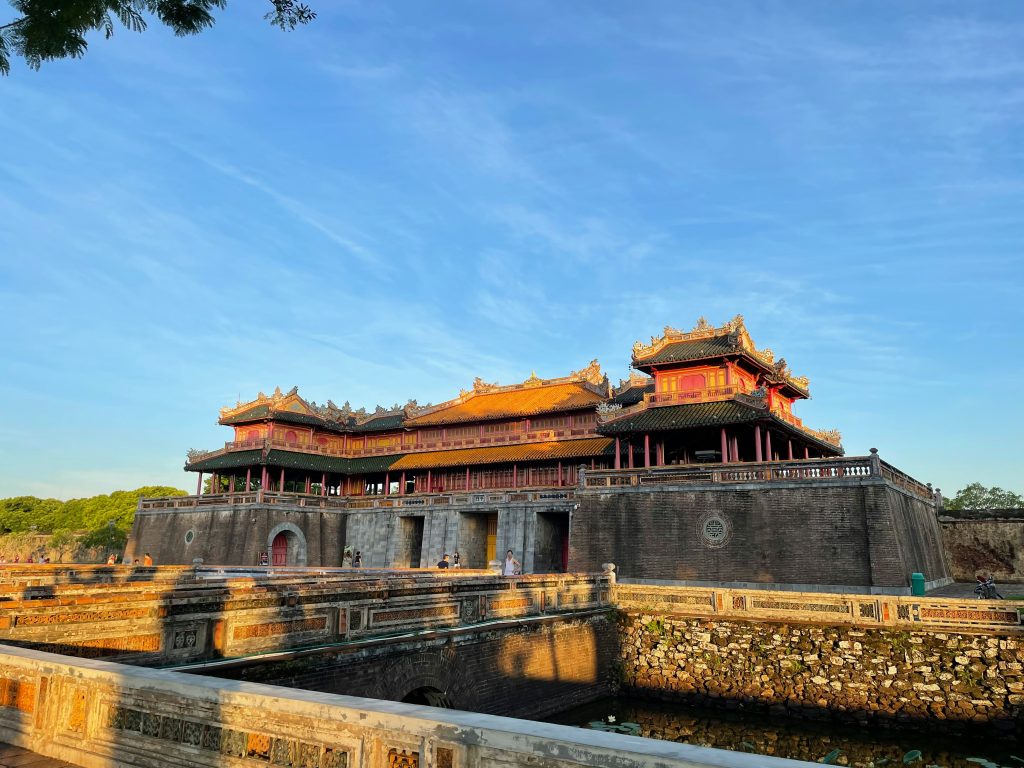
The Imperial City of Hue Capital belongs to the Complex of Hue Monuments—honored as the first UNESCO-recognized Cultural Heritage Site in Vietnam (1993). It showcases stupendous structures of opulent palaces, intricate shrines, pavilions, and ornate gardens, which served as the Nguyen Dynasty's base of power for 143 years (1802 - 1945).
Emperor Gia Long, the first ruler of the Nguyen Dynasty, commissioned the construction of the Imperial City in 1804. The complex was designed following traditional Vietnamese architectural principles and influenced by Chinese Confucianism. The Imperial City of Hue Capital is steeped in history and symbolism, representing Vietnam's imperial past and cultural heritage. It served as the seat of power for the Nguyen emperors, who governed over a unified Vietnam from Hue Capital.
Location: 23/8 Street, Thuan Hoa Ward, Hue City, Thua Thien Hue Province, VietnamOpen time: 8:00 AM - 17:30 PM (see in map)
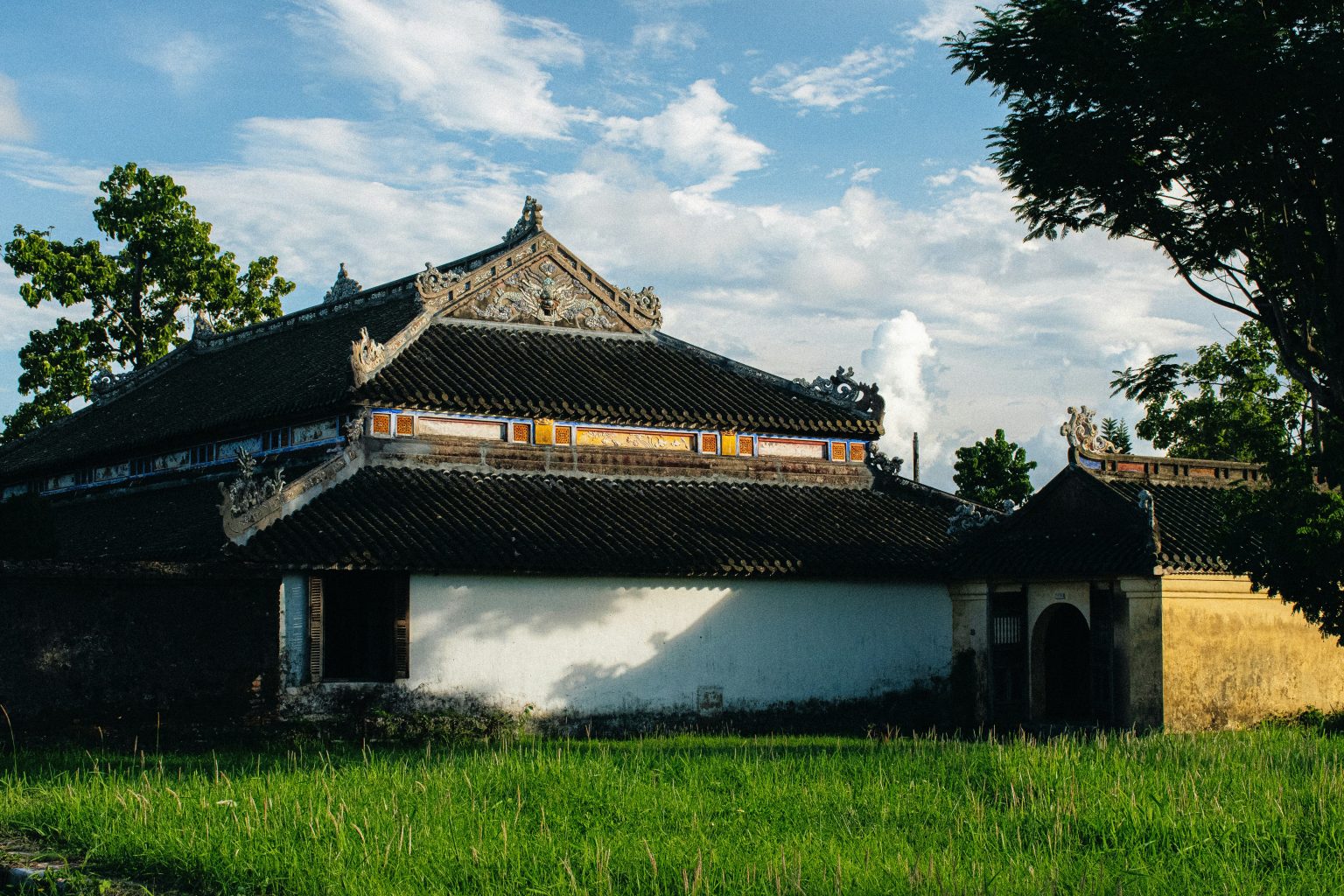
Among the seven extant regal mausoleums, Khai Dinh Tomb, Tu Duc Tomb, and Minh Mang Tomb are frequently visited thanks to their good condition and convenient location.
Khai Dinh Tomb: Emperor Khai Dinh, the penultimate ruler of the Nguyen Dynasty, constructed his tomb on a hillside approximately 10 kilometers south of Hue Capital. Completed in the early 20th century, the tomb is notable for its blend of Vietnamese, European, and Chinese architectural styles, reflecting the emperor's fascination with Western culture. The interior features intricate mosaics, ceramic tiles, and elaborate reliefs, showcasing the opulence and extravagance of the era.
Location: Chau Chu Village, Huong Thuy Town, Thua Thien Hue Province (see in map)
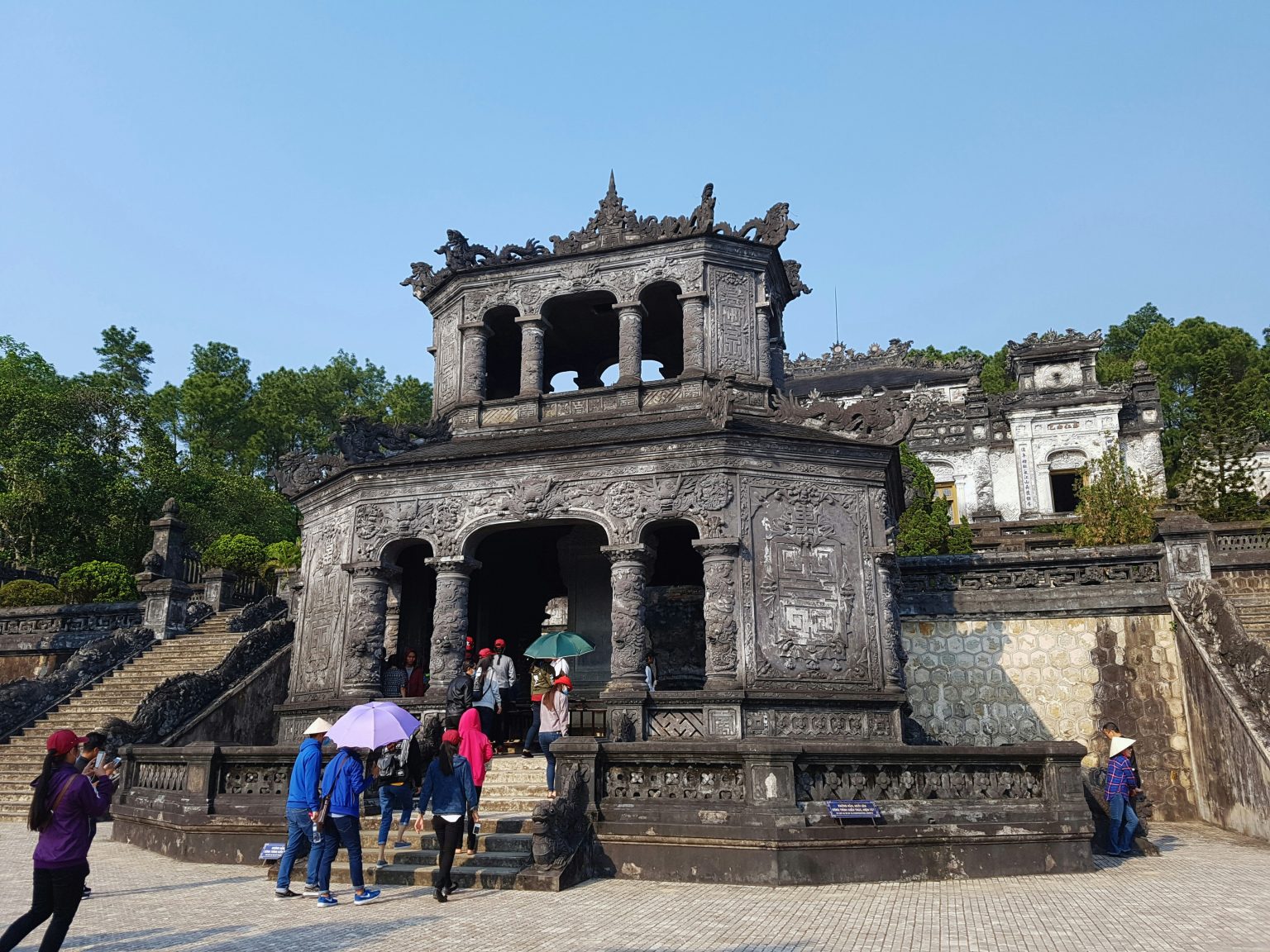
Tu Duc Tomb: Emperor Tu Duc, the fourth ruler of the Nguyen Dynasty, personally designed and oversaw the construction of his tomb during his reign in the mid-19th century. Located approximately 5 kilometers south of Hue Capital, Tu Duc Tomb is celebrated for its poetic beauty and serene ambiance. The tomb complex encompasses lush gardens, pavilions, and a lake with a small island, creating a tranquil retreat setting. Despite its grandeur, Emperor Tu Duc's tomb carries an air of melancholy, as he regarded it as a place of refuge during his lifetime and composed poetry reflecting his personal struggles and sorrows.
Location: 17/69 Le Ngo Cat Street, Thuy Xuan Ward, Hue City, Thua Thien Hue Province (see in map)

Minh Mang Tomb: Emperor Minh Mang, the second ruler of the Nguyen Dynasty, initiated the construction of his tomb, located approximately 12 kilometers southwest of Hue Capital. The tomb complex is celebrated for its serene beauty and meticulous design, featuring landscaped gardens, lotus ponds, and ornate gates. Constructed in the early 19th century, Minh Mang Tomb epitomizes classical Vietnamese architecture and Confucian principles, symbolizing the emperor's unwavering dedication to tradition and order.
Location: La Khe Bai Village, Huong Tho Commune, Huong Tra District, Hue City, Thua Thien Hue Province(see in map)

Besides being a royal land, Hue Capital is credited as the repository of many holy Buddhist relics, making it a significant place of local pilgrimage. Additionally, Hue Capital earned a global reputation as the hometown of Thich Nhat Hanh, an esteemed Vietnamese Zen Master. Thus, a visit to the exquisite temples here is recommended for travelers to contemplate ancient Vietnamese Buddhist art, gain spiritual enlightenment, and find peace of mind.
Thien Mu Pagoda: Thien Mu Pagoda is one of the most iconic landmarks in Hue Capital, situated on the northern bank of the Perfume River. Founded in the early 17th century, the pagoda is renowned for its seven-story octagonal tower, often considered the unofficial symbol of Hue Capital. Thien Mu Pagoda is a revered Buddhist site and an important center of worship, featuring several shrines, pavilions, and statues scattered throughout its grounds.
Location: Nguyen Phuc Nguyen Street, Huong Long Village, Hue City, Thua Thien Hue Province (see in map)
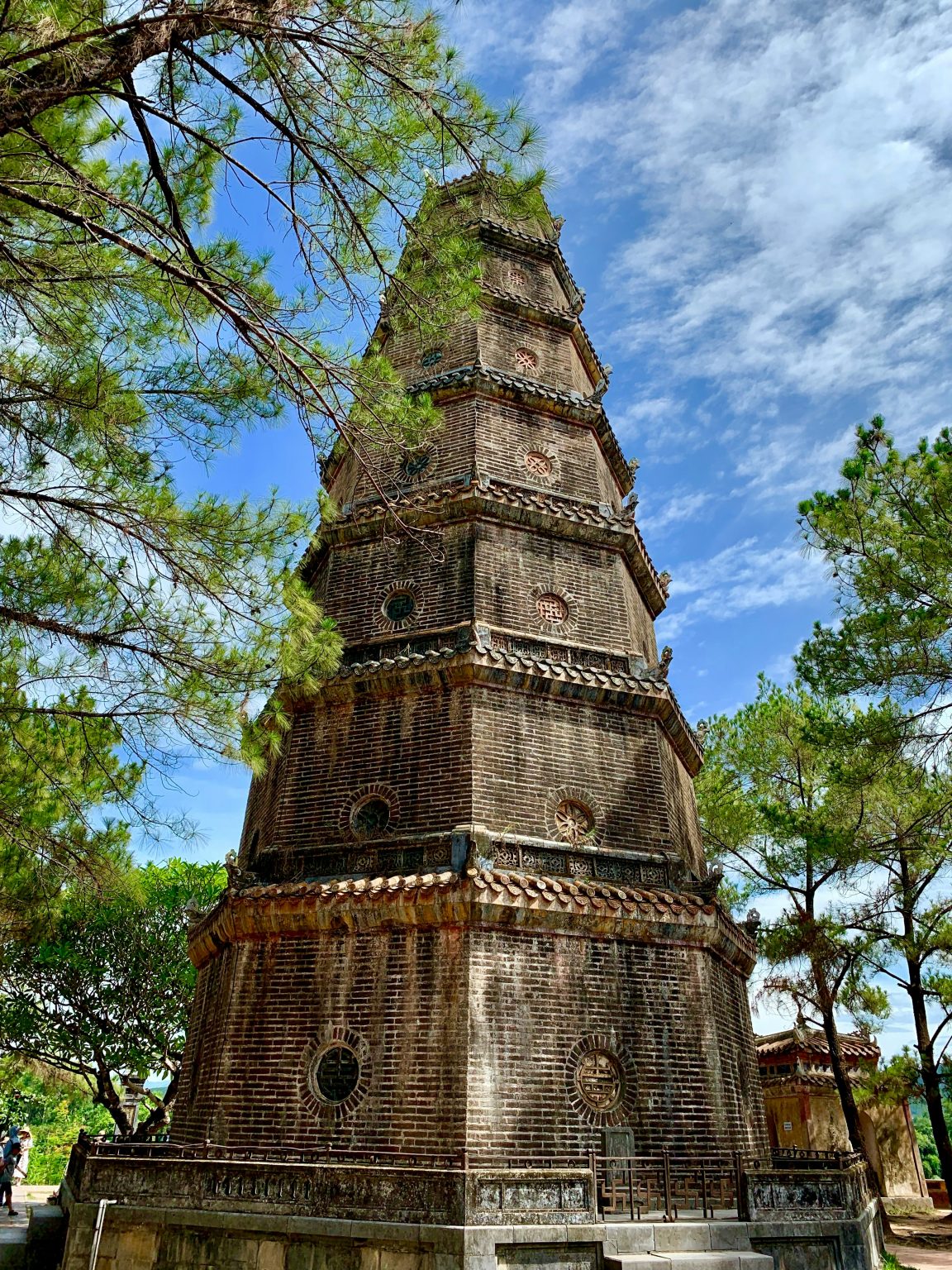
Thien Lam Pagoda: Perched on Quang Te hill, Thien Lam Pagoda is a Theravada Buddhist pagoda established by Most Venerable Ho Nhan in 1960 to honor Sakyamuni Buddha. Locals affectionately refer to Thien Lam as "the lying Buddha" or "the standing Buddha" pagoda due to its prominent statues—a 7-meter long reclining Buddha and an 8-meter tall standing Buddha. This 60-year-old pagoda is adorned with charming golden decorations amidst a serene pine forest, evoking a sense of tranquility and holiness. The picturesque setting of Thien Lam Pagoda makes it a serene spot for contemplation and spiritual reflection in Hue Capital.
Location: 22/54 Le Ngo Cat Street, Thuong 2 Hamlet, Thuy Xuan Commune, Hue City, Thua Thien Hue Province (see in map)
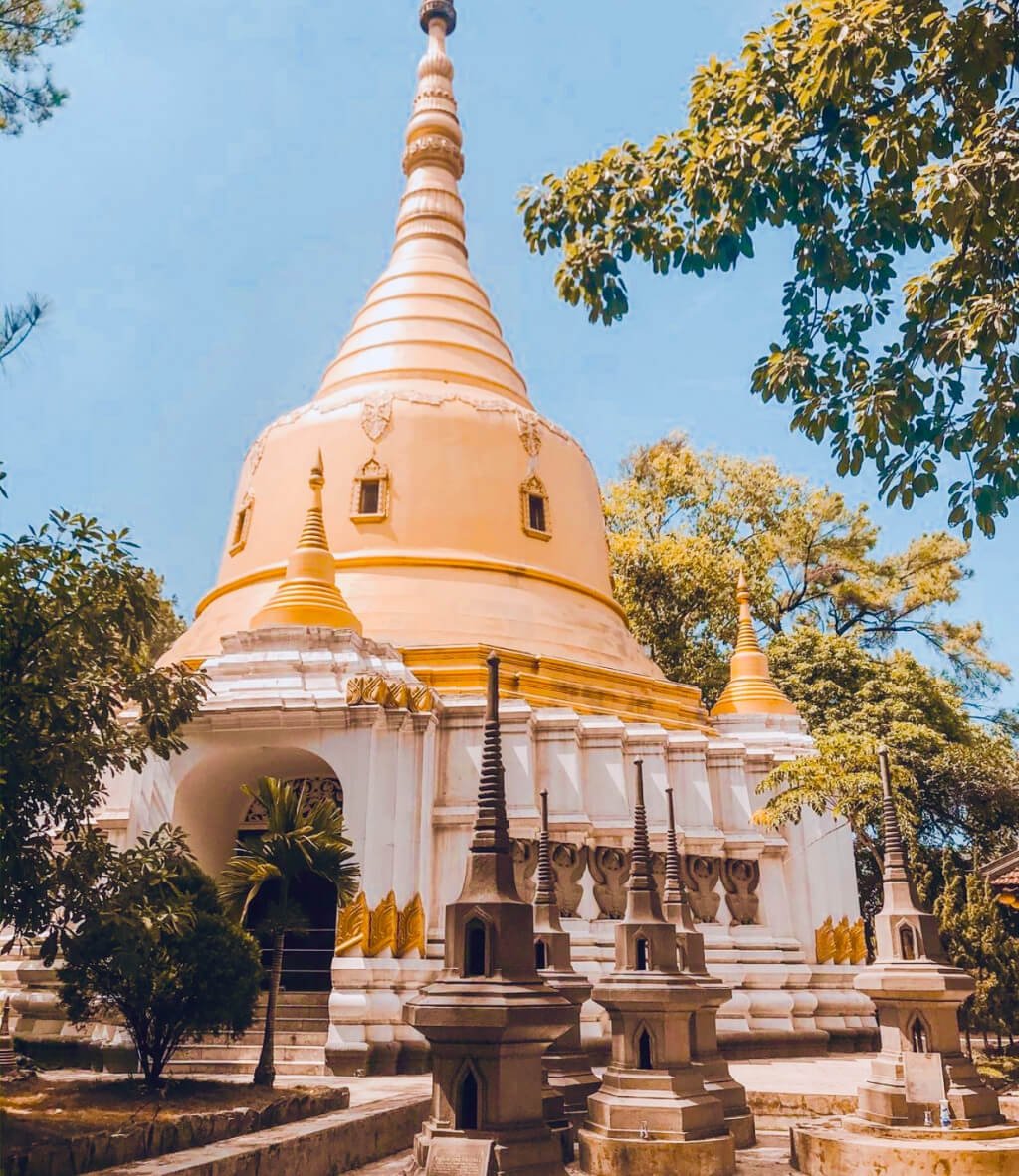
Location: 179B Phan Dinh Phung Street, Phu Nhuan Ward, Hue City, Thua Thien Hue Province (see in map)
An Dinh Palace was constructed in the early 20th century during the reign of Emperor Khai Dinh (1916-1925) for his younger brother, Prince Nguyen Phuc Buu Dao, and his family. The palace complex is a harmonious blend of Eastern and Western architectural styles, reflecting the influence of French colonialism on Vietnamese architecture during that period. An Dinh Palace comprises several buildings, including the main palace, reception halls, living quarters, and gardens.
Despite its relative modesty compared to the grandeur of imperial structures, An Dinh Palace is renowned for its elegant design and tranquil surroundings. Following the fall of the Nguyen Dynasty in 1945, the palace served various purposes under different regimes. It was later restored and opened to the public as a historical site and museum. Today, An Dinh Palace remains a popular tourist attraction in Hue Capital, offering visitors a glimpse into the lifestyle and architecture of Vietnam's early 20th-century elite.
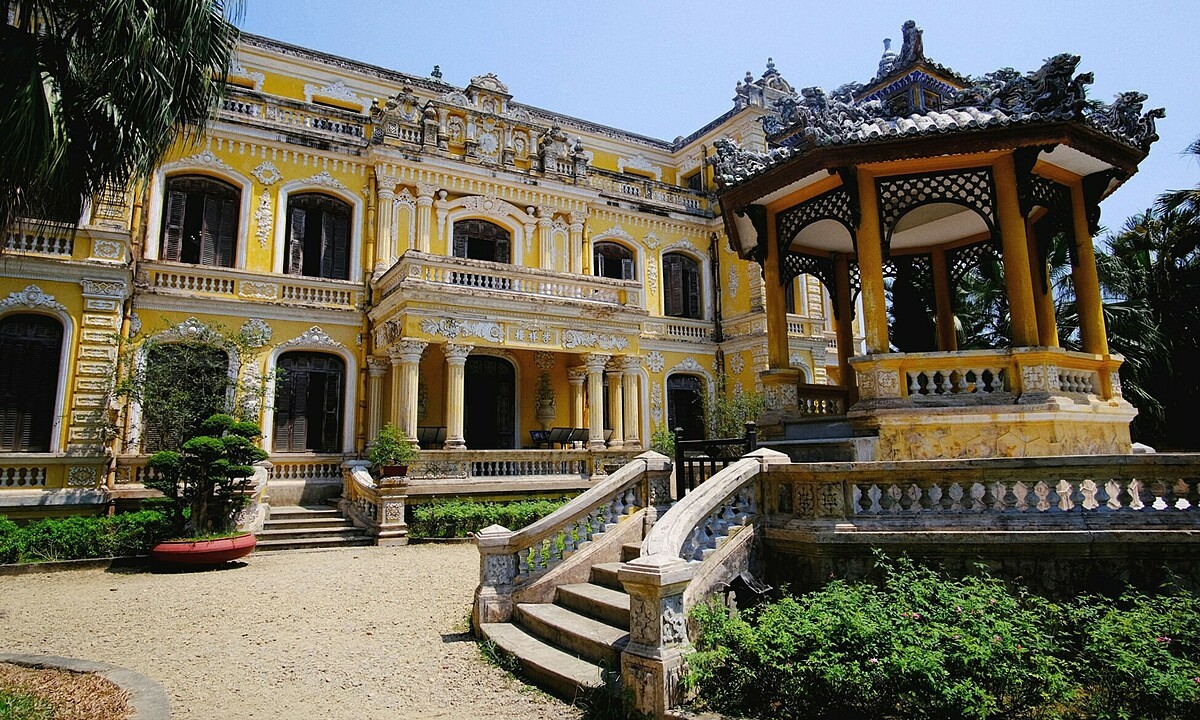
Location: 463 Lac Long Quan Street, Lang Co Town, Phu Loc District, Thua Thien Hue Province (see in map)
While Lang Co Beach is indeed a stunning coastal destination in Vietnam, it's important to note that it's not directly located in Hue Capital. However, it's relatively close to Hue Capital and is often considered part of the larger region's attractions.
Lang Co Beach is situated between Hue Capital and Da Nang, approximately 30 kilometers northeast of Hue Capital. It's renowned for its natural beauty, featuring pristine white sand, crystal-clear turquoise waters, and a backdrop of lush green mountains. The beach stretches for about 10 kilometers along a crescent-shaped bay, offering panoramic views of the surrounding landscape. Lang Co is a popular destination for beachgoers and outdoor enthusiasts seeking relaxation, swimming, sunbathing, and water sports such as snorkeling and kayaking.
The area surrounding Lang Co Beach is relatively undeveloped compared to other coastal destinations in Vietnam, contributing to its tranquil and unspoiled atmosphere. In addition to its natural attractions, Lang Co is known for its fresh seafood, with numerous restaurants and eateries offering local delicacies along the beachfront. Visitors to Lang Co can also explore nearby attractions, including Hai Van Pass, a scenic mountainous route that offers breathtaking views of the coast and countryside.

Hue Capital, Vietnam, may not be as renowned for its nightlife as some other cities in Vietnam like Hanoi or Ho Chi Minh City, but it still offers delightful experiences, including its walking streets. While Hue Capital is more famous for its historical and cultural attractions, its walking streets provide opportunities to explore the city's vibrant atmosphere and local cuisine.
Along the riverside of the Perfume River (Huong River) and facing Trang Tien Bridge, Nguyen Dinh Chieu Pedestrian Street is the first official walking street in Hue Capital. It offers a spacious and inviting area with a laid-back vibe where you can enjoy a leisurely walk, take in the fresh air and panoramic river view, shop for handmade keepsakes, and watch delightful street performances. You can also spend time on dragon boats on the Perfume River and listen to live Hue Royal Court Music—the first-ever UNESCO-recognized intangible cultural heritage of Vietnam.
Location: Nguyen Dinh Chieu Street, Phu Hoi Ward, Hue Capital, Thua Thien Hue Province. (see in map)
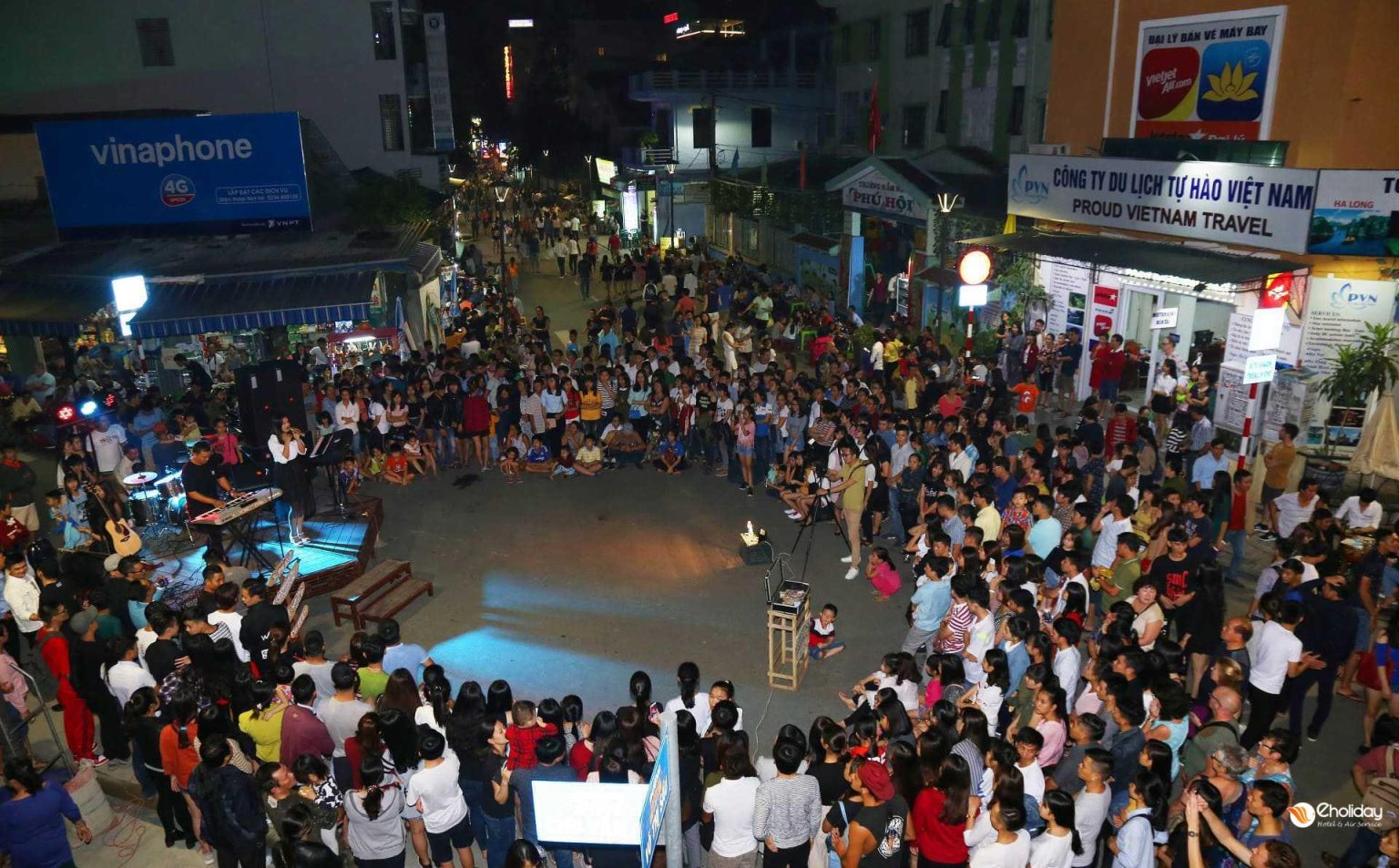
Connected to Nguyen Dinh Chieu Street, the adjacent Pham Ngu Lao – Chu Van An – Vo Thi Sau pedestrian streets (known as the Central Walking Streets) in the Western Quarter, which were opened in 2017, offer a different vibe. This Hue walking area caters to a dynamic and youthful crowd, providing a paradise for party-goers and night owls looking to unwind. Here, visitors can enjoy affordable drinks at outdoor bars and clubs, as well as indulge in scrumptious Hue street food.
Location: Vo Thi Sau Street, Phu Hoi Ward, Hue City, Thua Thien Hue Province. (see in map)
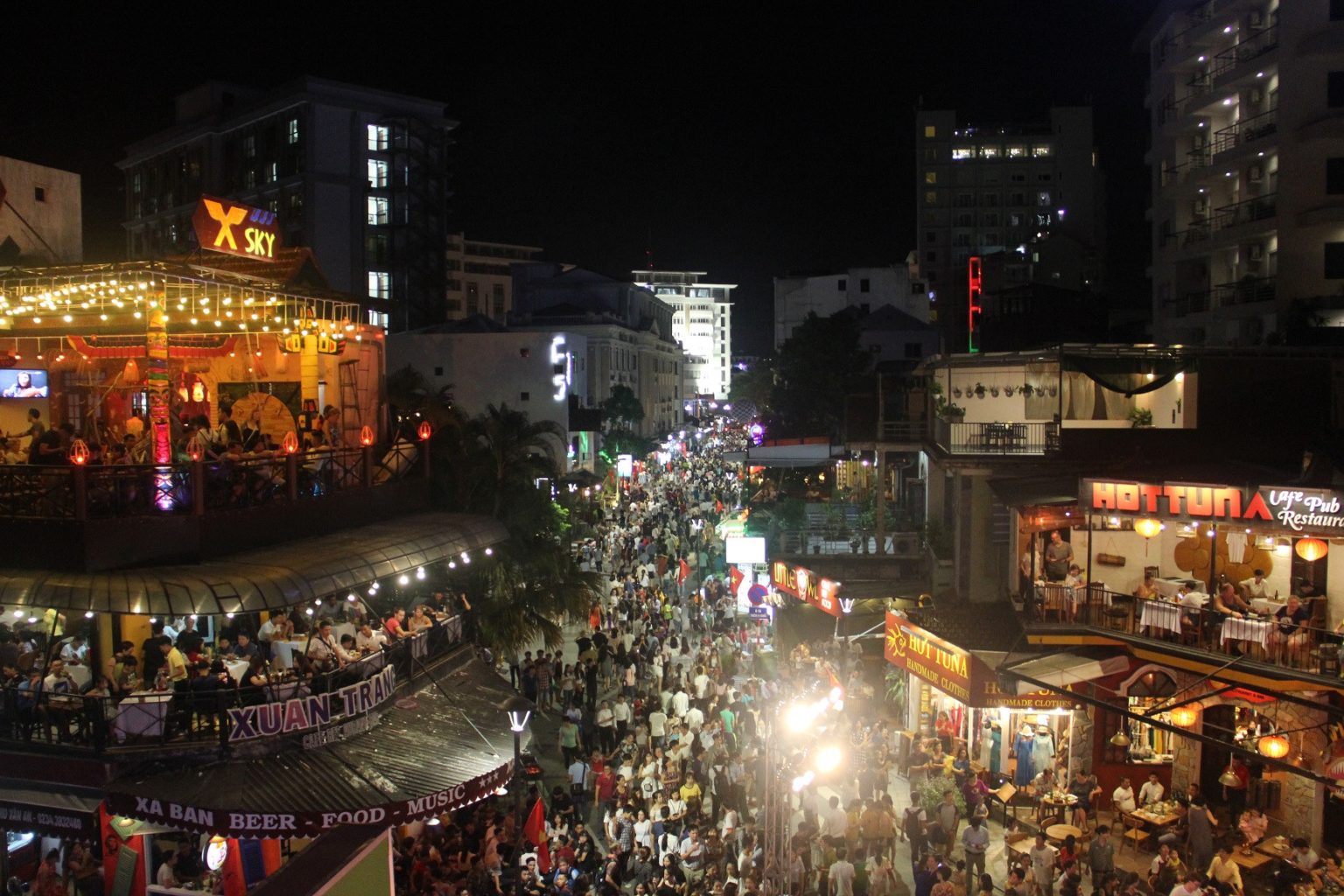
Riding a dragon boat and listening to Hue songs, while cruising on beautifully decorated boats and listening to traditional Hue songs, is an unforgettable experience that transports you back in time. The music, combined with the rhythmic engines of the boats, creates an enchanting atmosphere that leaves you feeling peaceful and content.
Visiting the mausoleums of the Nguyen Dynasty kings in Hue is a must-do activity. Each mausoleum showcases distinct designs, intricate details, and beautiful natural settings, offering visitors a glimpse into the country's fascinating history.
Exploring and taking photos at Huong Village is also highly recommended. Walking through the village, you'll find narrow streets lined with charming houses, some of which double as incense workshops. This village is a photographer's dream, with every corner being Instagram-worthy!
As your trip to Hue, Vietnam nears its end, finding the right souvenirs to take home as gifts for family, friends, and colleagues can be a fun experience. Here are some must-buy Hue gifts for your budget-friendly shopping list: Hue Conical Hat (Non La), Tailor-Made Ao Dai Hue (traditional Vietnamese dress), Tre Hue (Hue bamboo products), Dried Lotus Seeds, Keo Me Xung (sesame candy with peanuts), Keo Cau (sugar cane candy), Folk Paintings, and more. These unique gifts capture the essence of Hue's culture and make for memorable souvenirs.

Experiencing Vietnam’s Rich Ethnic Diversity at the Vietnam Museum of Ethnology Embarking on a journey through the Vietnam Museum of
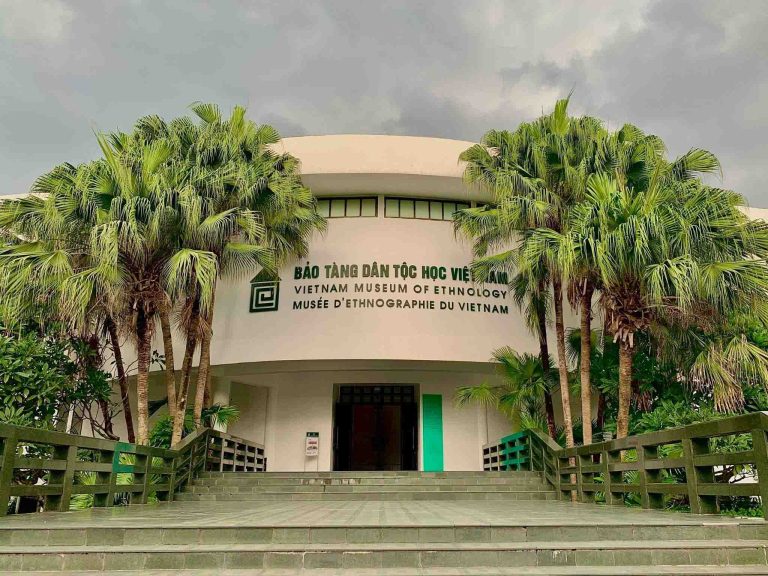
A Visitor’s Guide to the Vietnam Museum of Ethnology in Hanoi Are you planning a trip to Hanoi and looking
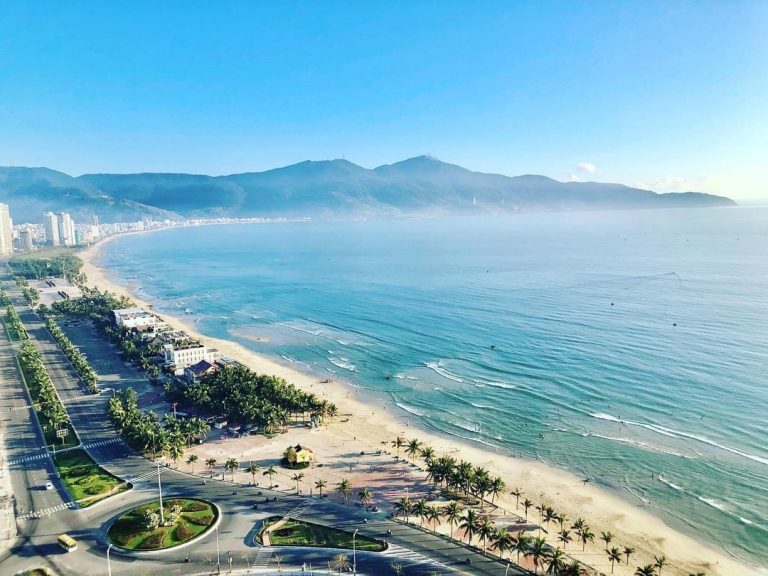
The Best Time to Visit My Khe Beach: Seasonal Guide My Khe Beach, with fine white sand and clear blue
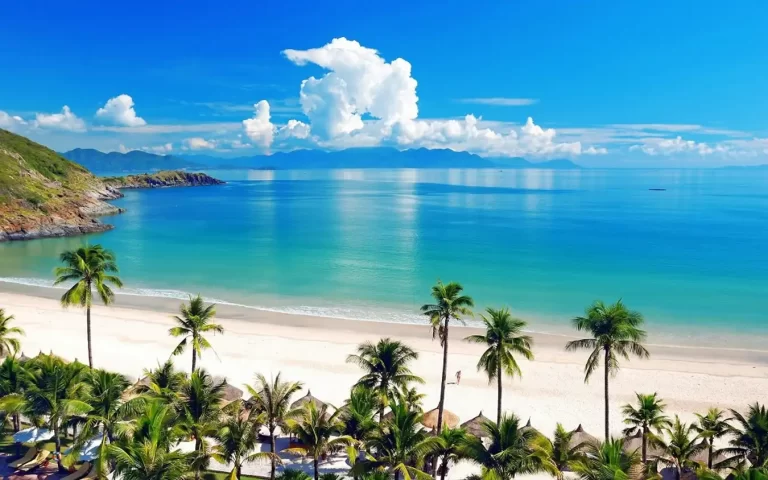
A Day at My Khe Beach: What to See and Do My Khe Beach, one of the most beautiful beaches